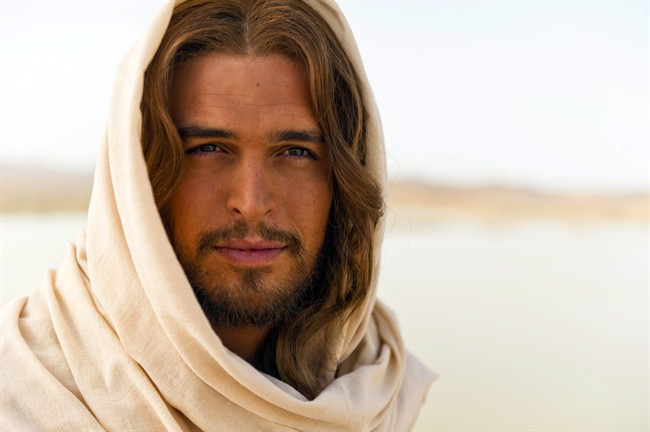“Son of God” is first in a series of biblical films
Portuguese actor Diogo Morgado takes the title role in the new biblical film, “Son of God.” Photo courtesy of www.sonofgodmovie.com.
March 4, 2014
With the oncoming slew of Christian faith movies, “Noah,” “God’s not dead,” “Exodus” and “Heaven is for Real,” the religious film festivities kicked off on Feb. 28 with Christopher Spencer’s biblical film “Son of God.” After “watching”—which actually entailed cringing with one hand covering my eyes—Mel Gibson’s anti-Semitic film, “The Passion of Christ,” I have to admit that I was more than mildly hesitant to watch this five-episode compilation from the History Channel’s “The Bible” miniseries.
“The Son of God” starts off with the first gospel verse from John, portrayed by Sebastian Knapp, from whose viewpoint the movie had been framed. After a few tense moments displaying the power and influence the Roman Empire had during that era, the proper story begins. Portuguese actor Diogo Morgado, who, for some strange reason, takes on a British accent for the film, is introduced as the warm, and somewhat stiff yet passionate, Jesus Christ.
Then, cue the Bible highlights reel. In the next hundred something minutes, Jesus saves a sinner, feeds 5,000, brings Lazarus back to life without really entering his tomb and walks on water. Needless to say, the film had serious pacing issues. The first half had the feel of a drawn out historical documentary and the latter introduced the quick cuts and action of a stereotypical Hollywood movie.
Despite the transitional weakness, “The Son of God” is a show-stopping film that shows the true passion and love the twelve apostles, all of whom were exceptionally cast, had for Christ. Darwin Shaw, who played the apostle Peter, gave a brilliant performance as the first disciple. Knapp was the perfect narrator, seaming the film together into a somewhat coherent episodic compilation. Other notable performances were given by Amber Rose Revah, who gave a candid portrayal of Mary Magdalene, as well as Roma Downey—it takes a lot to cry so much during one film—who played Virgin Mary.
Though not as gore driven as Gibson’s film, the well-awaited crucifixion scene was realistic with nuanced acting on Morgado’s part. But the film chose not to focus on the pain and whipping for too long, most likely due to the PG-13 rating, but instead chose to focus on the resurrection scene. Although the New Testament clearly states that the tomb was closed, on the third day after the crucifixion, Mary finds the tomb half opened with bits of broken rock scattered outside – a setting more suited for the dramatization that Hollywood is known for.
Although the film wasn’t able to encompass every word from the Bible, it was in the most part able to stay true to the story. With the preaching of good morals and a gallery of miracles, I was pleasantly surprised by “The Son of God.”






